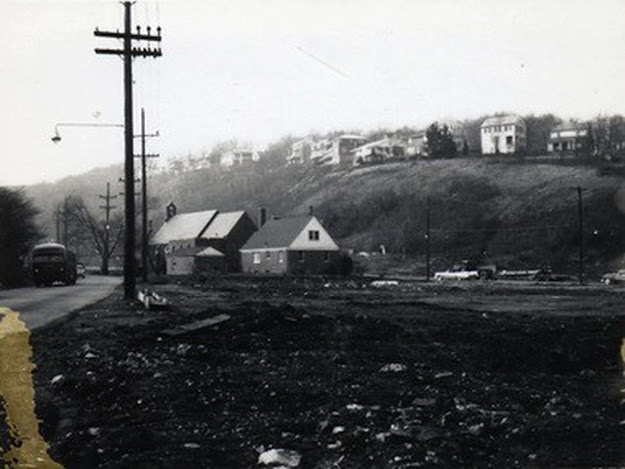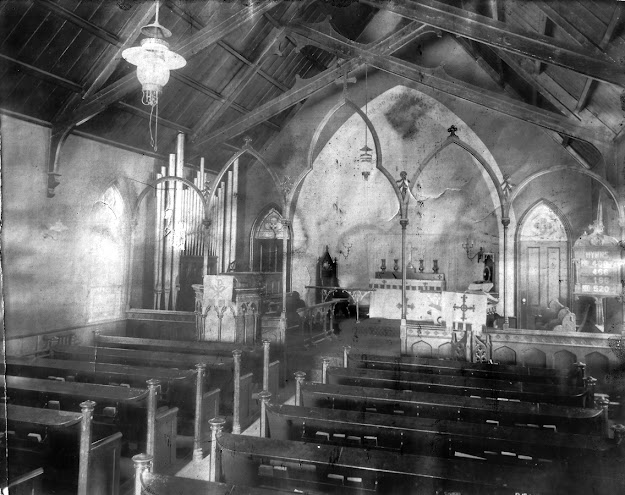St. Simon's movable church
When I started posting about the North Shore's Episcopal churches last year, I didn't know that St. Simon's was about to close. Again, like St. John's, it wasn't a church anyone I knew attended. It was just a small, brick church I saw along a curve on Richmond Road. Despite its thoroughly modern architecture, it still had the red doors many traditionally-designed Episcopal churches have. Now, it's gone, and its presence stripped clean from the internet.
St. Simon's brick building on Clove Road, ca. 1940
From the Staten Island Advance, the amazing New York Chapters of the American Guild of Organists site, and St. John's Episcopal's site, I discovered, like many other churches on the Island, St. Simon's was founded as a mission congregation to immigrants. Under the direction of the Rev. Richard M. Abercrombie, the St. Simon’s Free German Chapel of the Protestant Episcopal Church was founded in 1854. It first operated from a small building on Targee Street before moving to the vacant First Baptist building. That wood frame church was moved to Rhine Avenue near Steuben, and later to Clove Road. In 1960, the construction of the Staten Island Expressway forced the relocation of the parish to Richmond Road. The new church was built and for almost sixty years served its member. The building remains, but the parish is gone, its surviving member presumably shuffled off to other congregations. Any shuttered congregation is a loss of community and a connection to history and place, but I bet, as is so often the case, the building will soon house another denomination and starting their own history in a place that's new to them.
St. Simon's Richmond Road building - 2018
Stapleton, in the middle of the nineteenth century, was filled with Germans. On their own, the wealthy beer barons among them founded Trinity Lutheran on the corner of Beach and St. Paul's. Catholic Germans co-founded Immaculate Conception Roman Catholic Church on Targee Street, as well. As a member of Trinity, I always knew some of that history, and as I began studying Stapleton's past, I picked up some bits about Immaculate. St. Simon's past, though, is all new to me. I wonder how long the German influence there lasted.
from the SI Advance - St. Simon's on Clove Road prior to demolition
Trinity, which had called Pastor Frederic Sutter to inaugurate a more English-language direction for the church, still held German services into the early eighties. Finding the answer to this sort of question is a large part of the reason I started the Church Project so many years ago. Staten Island, no less than anywhere else in NYC, has a history of changing populations that reuse and repurpose the landmarks of the preceding residents. I guess this means I have to find and reach out to an archivist at the Episcopal Diocese of New York.
From the NYC of the American Guild of Organists
interior of St. Simon's











